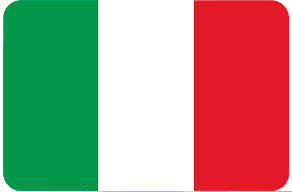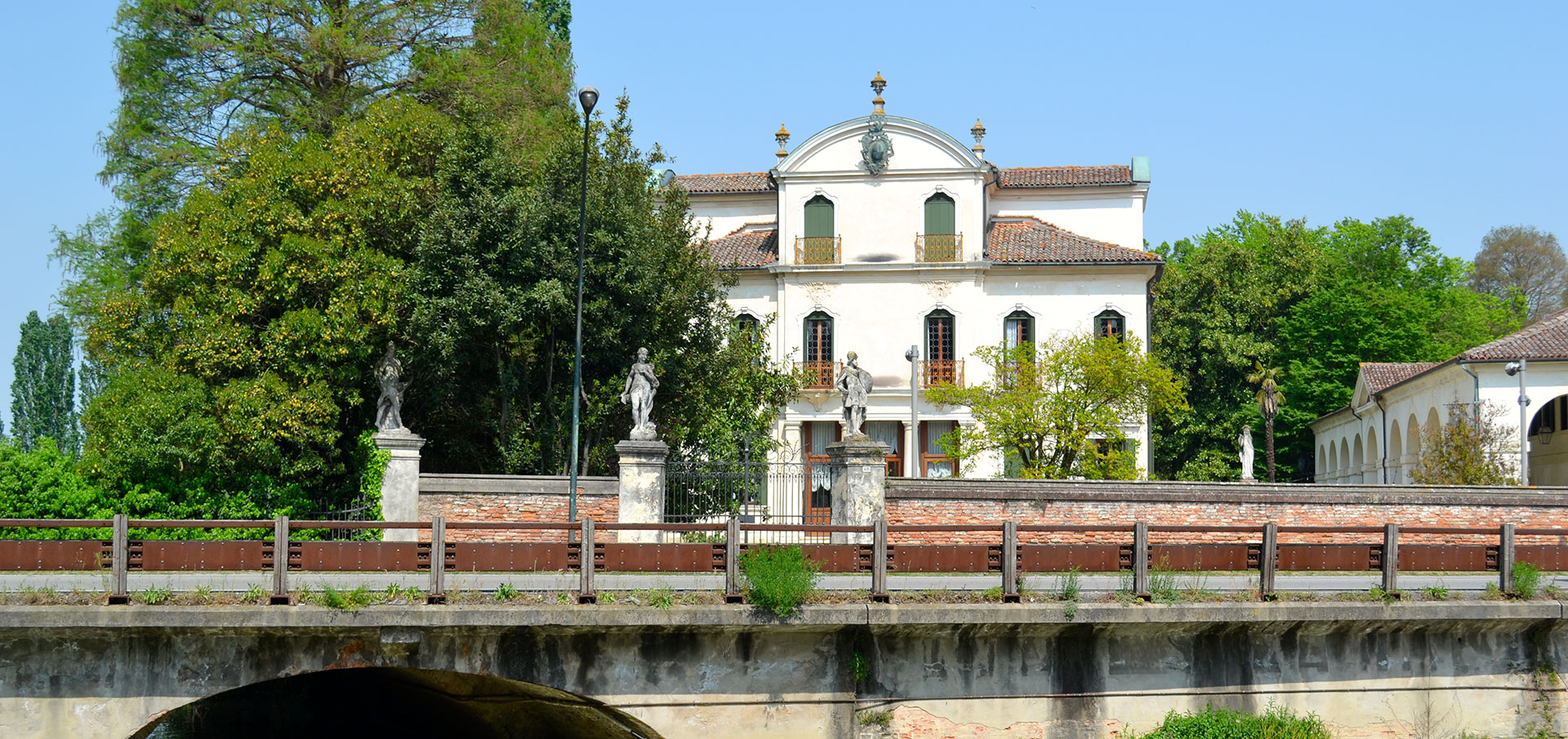
Le prime notizie sulla villa si hanno nel 1718 quando fu donata ad Elisabetta Tornimbeni e al marito, il conte Diodato Seriman, dai fratelli di lei. Il Seriman proveniva da una famiglia di ricchi mercanti armeni risiedenti in Persia, che giunti in Europa decisero di investire ingenti somme di capitali in terreni ed immobili.
Diodato si diede subito da fare per restaurare e rinnovare il corpo padronale, investì ingenti somme di denaro per far realizzare la barchessa, la chiesa, il giardino, la rimessa, la stalla e il muro di cinta.
Nel 1750 Diodato morì, lasciando dei debiti che i figli decisero di risanare vendendo il complesso al Duca Gabrio Serbelloni Grande di Spagna.
Fu ipotizzato che fu il Serbelloni ad apportare alcune modifiche all’edificio padronale realizzando il piano nobile e gli attici.
Fra il 1754 e il 1762 prese servizio presso la famiglia il grande poeta Giuseppe Parini come precettore del figlio di Gabrio, Gian Galeazzo. E’ nota inoltre, l’amicizia della famiglia con i Francesi e soprattutto con Napoleone, per il quale avevano allestito un prestigioso appartamento a Milano. Gli stretti rapporti con l’imperatore fruttarono alla famiglia cariche e onorificenze.
In epoca post napoleonica e fino al 1883 la proprietà fu trasferita ai Widmann-Rezzonico che decisero di ristrutturare l’edificio padronale e di adattarlo ai gusti rococò dell'epoca. Venne realizzato un grande salone centrale, strutturato su due piani, dove fu realizzato un ciclo di affreschi, racchiusi in finte cornici in stucco, attribuiti a Giuseppe Angeli.
Il complesso rimase ai Widmann fino al 1883 quando fu messo all’asta e successivamente acquistato dai Guolo. I nuovi proprietari affittarono l’edificio a Piero Foscari, marito di Elisabetta Widmann-Rezzonico . Nel 1901 Elisabetta decide di rientrare pienamente in possesso della villa.
Fra i vari personaggi illustri che soggiornarono in questo lussuoso edificio vi furono anche il Goldoni, Gabriele D’Annunzio, Carlo Rezzonico che divenne poi Papa Clemente XII.
Nel 1970 la villa fu venduta ai coniugi Costanzo, mentre nel 1984 il complesso passa definitivamente nelle mani della provincia di Venezia.
La Villa Seriman, poi Widmann-Rezzonico-Foscari, comprende oggi la casa padronale con il giardino, la corte adiacente, la barchessa, la chiesetta ed il vasto parco a nord, con la serra, arricchito da numerose specie arboree, da volatili e da un laghetto.

The first news about the villa dates back to 1718 when it was given to Elisabetta Tornimbeni and her husband, Count Diodato Seriman, by her brothers. The Seriman came from a family of rich Armenian merchants residing in Persia, who arrived in Europe and decided to invest large sums of capital in land and buildings.
Diodato immediately set about restoring and renovating the main body, invested large sums of money to build the barchessa, the church, the garden, the shed, the stable and the surrounding wall.
In 1750 Diodato died, leaving behind some debts that his sons decided to restore by selling the complex to the Duke Gabrio Serbelloni Grande of Spain.
It was hypothesized that it was Serbelloni who made some changes to the main building by creating the main floor and the attics.
Between 1754 and 1762 the great poet Giuseppe Parini took up service with the family as tutor of the son of Gabrio, Gian Galeazzo. Also known is the friendship of the family with the French and especially with Napoleon, for whom they had set up a prestigious apartment in Milan. The close relations with the emperor earned the family offices and honors.
In the post-Napoleonic era and until 1883, the property was transferred to the Widmann-Rezzonico family who decided to renovate the main building and adapt it to the Rococo tastes of the time. A large central hall was built, structured on two floors, where a cycle of frescoes was created, enclosed in fake stucco frames, attributed to Giuseppe Angeli.
The complex remained with the Widmanns until 1883 when it was auctioned and subsequently purchased by the Guolos. The new owners rented the building to Piero Foscari, husband of Elisabetta Widmann-Rezzonico. In 1901 Elisabetta decided to fully regain possession of the villa.
Among the various illustrious personalities who stayed in this luxurious building there were also Goldoni, Gabriele D'Annunzio, Carlo Rezzonico who later became Pope Clement XII.
In 1970 the villa was sold to the Costanzos, while in 1984 the complex passed definitively into the hands of the province of Venice.
The Villa Seriman, later Widmann-Rezzonico-Foscari, now includes the manor house with the garden and the adjacent courtyard, the barn, the church and the vast park to the north with the greenhouse enriched by numerous tree species, birds and a pond.

